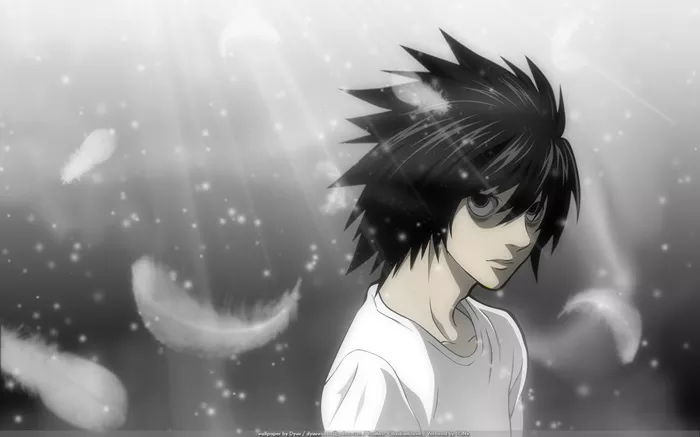Death Note continues to stand as one of the most iconic and enduring anime series, captivating audiences across the globe. Yet, decades after its release, the series holds a special place in my heart for a reason that many Western viewers seem to have overlooked: its profound religious symbolism.
Death Note is often hailed as the quintessential anime experience, with its compelling anti-hero, Light Yagami, and the enigmatic detective, L Lawliet, both leaving a lasting imprint on the anime landscape. The series’ cultural relevance is undeniable, but what truly sets it apart is a deeper layer of meaning that many fans miss—its Biblical and Buddhist undertones.
A Lasting Impact on the Anime Industry
Tsugumi Ohba’s Death Note is a reverse mystery that has been compactly delivered in 37 episodes. Despite being significantly shorter than other anime giants like One Piece or Naruto, its intricate narrative and execution have made it just as beloved worldwide. The series has left a lasting influence on both Western and Eastern artists, inspiring countless cosplays, fan art, and even a Netflix adaptation in 2017.
Interestingly, Death Note has even inspired a musical adaptation, featuring Broadway’s Jeremy Jordan as Light. While a U.S. stage production has yet to be announced, the musical’s growing popularity suggests that it’s only a matter of time before it makes its American debut. Despite these many adaptations and homages, nothing compares to the original 2006 anime series. The reason? Its deeply rooted Biblical and Buddhist inspirations that have gone largely unnoticed by many fans.
Death Note’s Enduring Popularity
Death Note follows the journey of Light Yagami, a brilliant high school student who stumbles upon a mysterious black notebook with the power to kill anyone whose name is written in it. As Light embarks on a self-imposed mission to rid the world of criminals, he spirals into a delusion of grandeur, believing himself to be the “god of a new world.” This twisted sense of justice sets him on a collision course with L, a reclusive but brilliant detective determined to stop the elusive killer.
The gripping plot is a key factor in the series’ cultural impact, and it’s no surprise considering its production by Madhouse Inc., a studio known for adapting thought-provoking and enduring stories. From Death Note to Hunter x Hunter and One Punch Man, Madhouse has consistently chosen narratives that resonate deeply with audiences, regardless of animation style or fight choreography.
The Heart of Death Note
When I first watched Death Note, I noticed the religious symbolism woven into its narrative, though I missed the full extent of it. On closer inspection, it’s clear that these themes are central to the story. Death Note draws from both Biblical and Buddhist traditions, each influencing different parts of the series. The Biblical references, in particular, are a constant presence, though they often go unnoticed by Western audiences.
In the context of the Bible, Light Yagami can be seen as a representation of humanity or even Judas, the disciple who betrayed Jesus. Just as Judas’ actions led to the crucifixion and ultimate sacrifice of Jesus, Light’s actions set the stage for his own downfall. L, in this interpretation, embodies a Christ-like figure—aware of his impending death yet accepting it as part of his destiny.
A Symbolic Masterpiece
One of the most uncomfortable yet crucial scenes in Death Note is the infamous “foot massage” scene, where L offers to massage Light’s feet. This moment has clear Biblical parallels. In the Bible, Jesus washed the feet of His disciples as an act of humility and service. L’s gesture echoes this, symbolizing his awareness of his fate and his acceptance of it, much like Jesus’ acceptance of Judas’ betrayal.
This scene, which initially struck many fans, including my own students, as odd or out of place, takes on a profound significance when viewed through the lens of Biblical symbolism. Once my students understood this context, what was once an uncomfortable moment became a powerful depiction of selflessness and surrender.
A Buddhist Perspective on a Biblical Tale
While much of Death Note draws from Biblical themes, its conclusion has a distinctly Buddhist flavor. Light’s death is a stark reminder of the impermanence of life and the futility of trying to transcend human limitations. His demise, lonely and stripped of power, reflects the Buddhist belief in the cycle of life, death, and rebirth.
At the end of the manga, Light’s death is followed by two black pages, symbolizing his nonexistent afterlife. However, an intriguing theory suggests that Light may have been reincarnated as a Shinigami, a figure resembling him appearing in a Death Note OVA. This theory aligns with Buddhist concepts of reincarnation, where life and death are seen as a continuum, and the spirit may be reborn in a different form.
Conclusion
Death Note remains a powerful and timeless anime not just for its thrilling plot and unforgettable characters, but for the rich religious symbolism that underpins its narrative. These deeper themes add layers of meaning that many Western fans may have missed on their first viewing. For me, discovering these elements has only deepened my appreciation for the series, cementing Death Note as my all-time favorite anime.
What may have initially seemed like a simple story of good versus evil is, in reality, a complex exploration of morality, religion, and the human condition. Death Note is more than just an anime—it’s a masterpiece of storytelling that continues to resonate with audiences, decades after its release.


